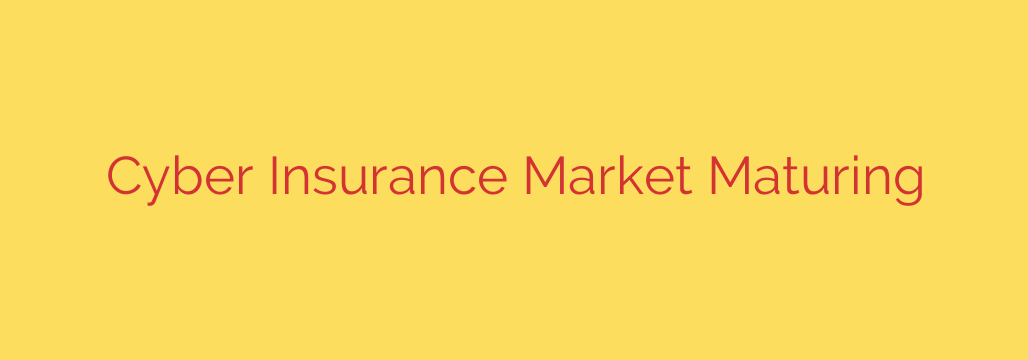
The New Rules of Cyber Insurance: Navigating a Maturing Market
For years, the cyber insurance landscape felt like the Wild West. Premiums skyrocketed, coverage became harder to secure, and businesses scrambled to meet ever-changing demands. Today, the dust is settling, and the market is entering a new phase of maturity. While this brings a welcome sense of stability, it also introduces a new set of rules that every organization must understand to protect itself.
The chaotic price hikes and frantic policy changes of the past few years were a direct reaction to staggering losses, primarily driven by a surge in ransomware attacks. Insurers were trying to price a rapidly evolving risk, and the result was volatility. Now, that volatility is being replaced by a more calculated, data-driven approach.
Premium Hikes Are Slowing, But a New Baseline Is Set
The good news is that the era of triple-digit premium increases appears to be over for most industries. After a period of significant correction, pricing is beginning to stabilize. However, this stabilization doesn’t mean a return to cheap, easy coverage.
Instead, a new, higher baseline for cyber insurance costs has been established. Insurers now have a much clearer understanding of the financial devastation a single cyberattack can cause. They have adjusted their models to reflect this reality, meaning the current pricing levels are likely here to stay. The stabilization simply means that future increases are expected to be more predictable and moderate.
The Era of Scrutiny: Underwriting Gets Serious
Perhaps the most significant change in the maturing cyber insurance market is the rigor of the underwriting process. In the past, obtaining a policy might have involved little more than filling out a simple questionnaire. Today, that is no longer the case.
Insurers are now conducting deep-dive assessments of a company’s security posture before even offering a quote. Having a robust cybersecurity program is no longer a way to get a discount; it is the absolute minimum requirement for obtaining coverage at all. Companies that cannot demonstrate a serious commitment to security will find themselves uninsurable at any price.
This intense scrutiny means insurers are demanding specific, verifiable security controls are in place. They are moving away from accepting promises and are now requiring proof.
The Non-Negotiable Security Controls for Coverage
If you are seeking new or renewed cyber insurance coverage, expect your insurer to demand evidence of several key security measures. These are no longer optional best practices but mandatory prerequisites for a policy.
- Multi-Factor Authentication (MFA): This is the single most important control. Insurers require MFA to be implemented across all critical systems, including email, remote access (VPN), and privileged administrator accounts.
- Endpoint Detection and Response (EDR): Traditional antivirus software is no longer considered sufficient. EDR solutions provide more advanced threat detection, investigation, and response capabilities that are crucial for stopping sophisticated attacks like ransomware.
- Secure and Tested Backups: Organizations must prove they have a reliable backup system. This includes maintaining offline or immutable backups that are isolated from the main network and regularly testing the restoration process to ensure it works in a crisis.
- Employee Security Training: The human element remains a primary vulnerability. Insurers want to see a formal, ongoing security awareness program that trains employees to recognize and report phishing attempts and other social engineering tactics.
- Privileged Access Management (PAM): Controlling who has access to your most sensitive data and systems is critical. PAM solutions help manage and monitor administrator accounts to prevent them from being compromised and used against you.
Looking Ahead: What to Expect from the Future of Cyber Insurance
As the market continues to evolve, we can expect several trends to become more prominent. Policies will likely become more standardized, but they will also feature more specific sub-limits and exclusions. For example, coverage for ransomware-related costs, like extortion payments, may come with its own, lower coverage limit.
Furthermore, the relationship between insurer and client is becoming more of a partnership. Many providers now offer proactive risk management services, such as vulnerability scanning and security consultations, to help their clients reduce their risk profile.
To successfully navigate this new environment, businesses must shift their mindset. Cyber insurance is not a substitute for strong cybersecurity. It is a financial backstop for a well-managed security program. By investing in the required controls and demonstrating a proactive approach to risk management, you not only protect your organization but also position yourself to secure the vital insurance coverage you need.
Source: https://www.helpnetsecurity.com/2025/08/15/cyber-insurance-market-maturity/








